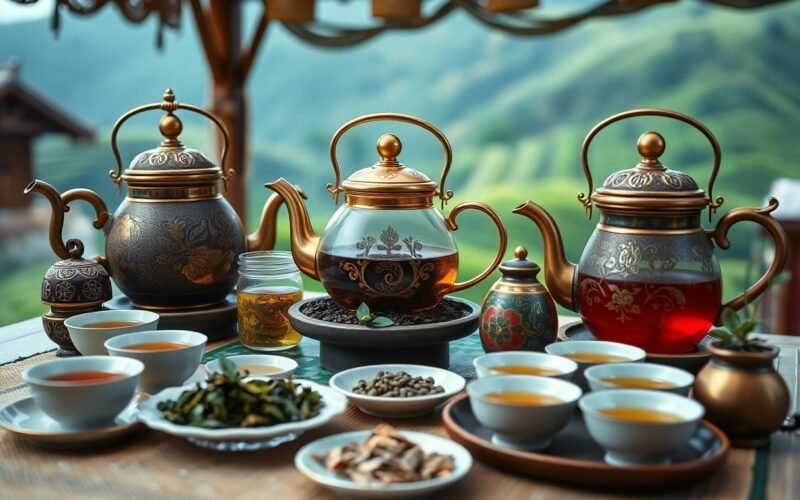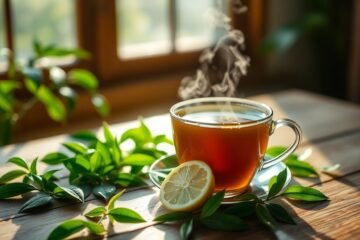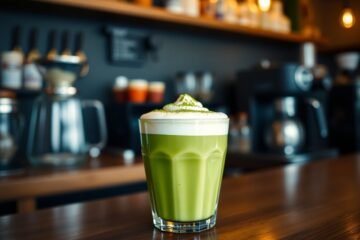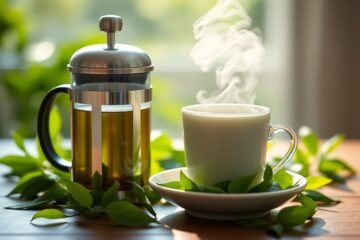You may be surprised to discover the rich tapestry of hidden rituals that surround the world’s most famous teas. From the zen-like precision of Japanese matcha ceremonies to the vibrant celebrations of Chinese gongfu tea, these practices not only enhance flavor but also provide profound insights into cultural traditions. As you examine into these fascinating rituals, you’ll not only appreciate your next cup of tea more but also connect with the stories and heritage that each steep holds. Let’s initiate on this enlightening journey together!
Key Takeaways:
- The preparation of tea varies significantly across cultures, with each region having its own traditional methods that highlight specific flavors and aromas.
- Rituals surrounding tea consumption often emphasize mindfulness and relaxation, transforming tea time into an experience that promotes well-being and connection.
- Understanding the history and significance of different teas enhances appreciation, as each type carries its own story and reflects the environment in which it is grown.
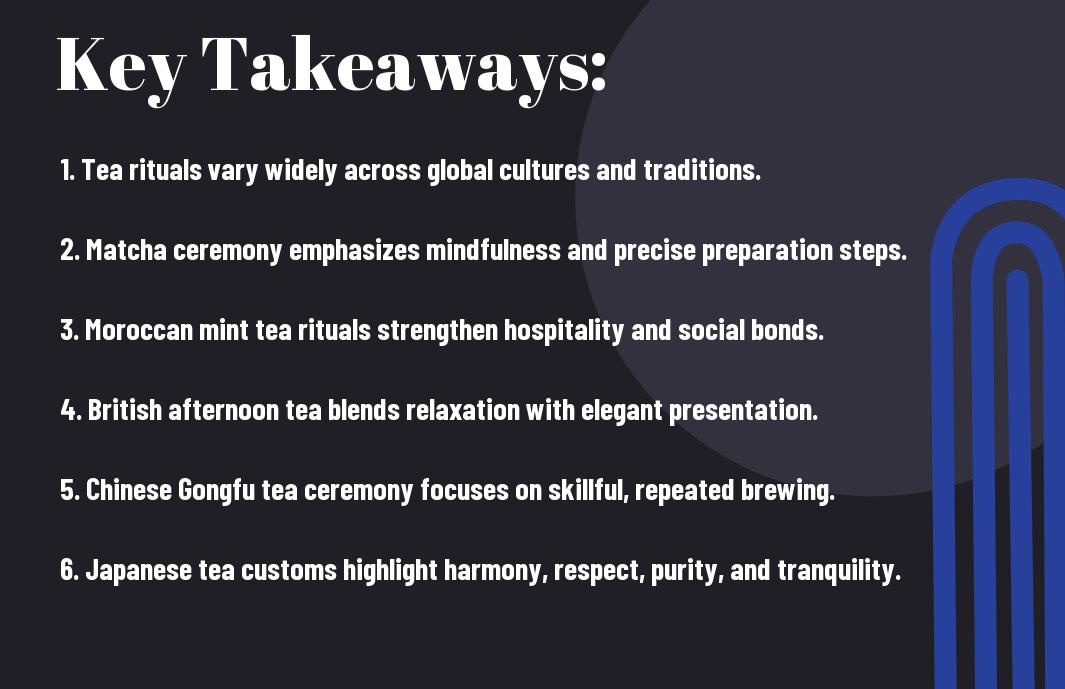
The Cultural Tapestry of Tea Traditions
Across cultures, tea transcends being just a beverage; it embodies a rich tapestry of traditions and values. You can explore this vibrant world of tea and its myriad rituals in The World of Tea: Global Tea Rituals and Tea Times. Each country has unique customs that reflect the essence of its culture, making tea a symbol of hospitality, respect, and social connection.
Regional Rituals: From China’s Gongfu to British Afternoon Tea
The intricate art of Gongfu tea in China demands meticulous attention, celebrating flavor and aroma through multiple infusions. In contrast, the delightful ritual of Afternoon Tea in Britain embodies elegance and leisurely social interaction, creating an opportunity for friends to connect over scones and finger sandwiches, all while enjoying a calming cup of tea. These rituals highlight the diverse ways you can appreciate tea, reflecting both cultural values and personal connections.
Symbolism and Social Significance in Different Cultures
Tea is imbued with symbolism in various cultures, representing life’s journey, respect, and even spiritual enlightenment. In Japan, the Chanoyu (tea ceremony) is a profound meditation on harmony and simplicity, while Moroccan mint tea signifies hospitality and friendship, where the act of pouring tea delicately expresses care and welcome. In essence, the act of sharing tea captures the heart of human connection and cultural richness.
Each tea ritual delivers its own social narratives. For instance, during the Japanese tea ceremony, participants embrace *wabi-sabi*, the beauty in imperfection, fostering mindfulness. Similarly, in the Himalayas, sharing Tibetan butter tea showcases generosity and bonding among communities. These traditions are not just about enjoying a drink; they serve as cultural conduits, bridging generations and fostering relationships through shared experiences. By participating in these rituals, you not only indulge in tea but also connect with the shared histories and values rooted in diverse cultures.
Craftsmanship in Tea Production
The intricate process of tea production is a delicate dance of nature and human skill, where each step influences the final flavor profile of your cup. From the moment the tea plant is nurtured in its ideal environment to the thoughtful methods of harvesting and processing, every detail matters. Artisans play a pivotal role in this journey, as their craftsmanship transforms raw leaves into the diverse brews cherished across the globe. Understanding these nuances unveils a deeper appreciation for the teas you enjoy daily.
The Alchemy of Growing and Harvesting: Conditions that Shape Flavor
Flavor in tea is an exquisite balance determined by altitude, climate, and soil quality. For instance, high mountain teas, like those from the Darjeeling region in India, thrive at elevations over 3000 feet, where cooler temperatures and misty conditions enhance their aromatic profiles. Likewise, variations in rainfall and sunlight can create distinct flavors, allowing your senses to explore the complexity of terroir with every sip.
Artisanal Techniques: The Distinction Between Handcrafted and Mass-Produced
In the world of tea, artisanal techniques reflect the dedication and expertise of skilled producers, setting handcrafted varieties apart from mass-produced options. Hand-rolled teas, such as Ti Kuan Yin, showcase meticulous labor where each leaf is thoughtfully processed by artisans to preserve its unique character. This personalized method fosters distinct flavors and aromas, allowing you to savor the true essence of the regions from which they originate.
Mass-produced teas often prioritize efficiency over individuality, leading to uniformity that diminishes flavor. Industrial methods primarily rely on machine harvesting, which can compromise leaf integrity and reduce the complexity of flavor. In contrast, artisanal methods embrace the nuanced processes of withering, oxidation, and rolling by hand. Think of the time-consuming work behind a single batch of Japanese gyokuro, where shade-grown leaves are meticulously picked to create a sweet and umami-rich brew. These labor-intensive practices not only guarantee quality but also encapsulate centuries of tradition, resulting in a product that genuinely reflects both the land and the artisans who craft it.
Brewing Mastery: Unlocking Flavor Potentials
Mastering the art of brewing not only elevates your tea experience but unveils the rich tapestry of flavors within each leaf. Different types of teas hold unique characteristics that can be unlocked through the right brewing techniques. Understanding how to fine-tune your brewing process—such as adjusting steeping times and ingredient ratios—allows you to explore the full depth of your tea, revealing hidden notes and aromas that might otherwise go unnoticed.
Temperature and Time: The Science Behind the Perfect Brew
| Tea Type | Water Temperature | Steeping Time |
| Green Tea | 160°F – 180°F (70°C – 80°C) | 2 – 3 minutes |
| Black Tea | 190°F – 212°F (88°C – 100°C) | 3 – 5 minutes |
| Oolong Tea | 180°F – 200°F (80°C – 95°C) | 3 – 5 minutes |
| Herbal Tea | 212°F (100°C) | 5 – 7 minutes |
Ritualistic Tools: Teapots, Infusers, and Their Cultural Significance
Every tea ceremony is an ensemble crafted with meticulous consideration for tools used. Teapots, infusers, and other implements not only serve functional purposes but also carry profound cultural significance across various societies. From the elegant cast-iron tetsubin in Japan to the delicate porcelain gaiwan favored in China, each tool reflects heritage, craftsmanship, and the philosophy surrounding tea appreciation.
For instance, the Japanese tea ceremony embodies a spiritual approach where the teapot’s construction—a symbol of harmony and peace—is juxtaposed with the brewing process, creating a profound experience transcending mere consumption. Similarly, the Chinese gaiwan, a three-piece vessel, permits precise control over water and tea ratio, resonating with centuries of tradition. Understanding these tools enhances not just your brewing skills but connects you to the rich history woven into the world of tea.
The Health Secrets Steeping in Cups
Unveiling the health benefits of tea reveals a world of wellness steeped in every cup. From reducing the risk of chronic diseases to enhancing your overall vitality, tea offers myriad advantages. Tea drinking cultures worldwide have harnessed these benefits, leading to a blend of flavorful experiences that nourish both the body and mind.
From Antioxidants to Relaxation: The Wellness Benefits of Tea
Rich in antioxidants, tea helps combat oxidative stress, promoting heart health and supporting your immune system. Varieties such as green tea offer epigallocatechin gallate (EGCG), known for enhancing metabolism and weight loss. Beyond physical benefits, certain teas like chamomile and lavender are famed for their relaxation properties, aiding in stress relief and improved sleep quality.
Tea in Traditional Medicine: Ancient Practices that Endure
Throughout history, tea has served as a cornerstone in traditional medicine across cultures. Chinese herbal medicine, for instance, incorporates various teas for their healing properties, addressing health concerns like digestion, inflammation, and even mental clarity. Ayurvedic practices advocate for specific herbal blends, targeting dosha imbalances to restore wellness. The emergence of these practices not only highlights tea’s medicinal potential but also its ability to adapt, fostering a cross-cultural appreciation for natural healing.
Ancient traditions continue to influence modern health practices, proving that the wisdom of the past remains relevant today. For example, traditional Chinese medicine often prescribes oolong tea to aid digestion, leveraging its unique fermentation process. In India, you might find chai made with ginger and cardamom used to boost immunity and vitality. This enduring collaboration between tea and traditional remedies demonstrates its versatility and potent role in holistic health, reminding you that every sip connects you to a rich legacy of healing practices.
The Evolution of Tea in Modern Society
In today’s fast-paced world, tea has transformed from a traditional ritual into a ubiquitous staple, seamlessly blending into daily routines. Previously steeped in cultural significance, your tea-drinking habits now reflect a fusion of tradition and modernization, leading to an explosion of flavors and forms. The global landscape also plays a significant role, as tea has become a canvas for creativity, appealing to diverse tastes and preferences while sparking interest in unique blends and brewing methods.
How Globalization is Transforming Tea Consumption
Globalization has redefined your tea experience, intertwining local traditions with international influences. Access to exotic teas from distant regions means you can explore flavored varieties that wouldn’t have been available just decades ago. The rise of online retailers has also made it possible to enjoy rare selections straight from their origins, broadening your palate and understanding of world tea cultures.
The Rise of Specialty Tea: Crafting Experiences in the Digital Age
Amidst the tea evolution, specialty teas have emerged as a dominant trend, offering you more than just a drink; they provide full sensory experiences. As artisan blends become widely accessible, you’re encouraged to experiment with unique flavors and elevate your tea ritual into a personal journey. Online platforms facilitate community engagement, allowing you to share and discover curated tea experiences with fellow enthusiasts across the globe.
As you probe deeper into the world of specialty tea, you’ll discover that brands are increasingly focused on storytelling, emphasizing artisan craftsmanship and sourcing transparency. Your connection to the tea not only relies on the taste but also on the journey it undertakes from farm to cup. Subscription boxes featuring limited-edition blends can offer monthly surprises, all while fostering a sense of community and appreciation for the craft. Innovative marketing strategies, such as live virtual tastings and interactive educational content, further enhance your engagement, making each cup a unique experience that reflects both tradition and modernity.
Summing up
Conclusively, as you launch on your journey to unlock the secret rituals behind the world’s most famous teas, you’re not just enjoying beverages; you’re engaging in rich traditions that have shaped cultures for centuries. Understanding the origins, preparation methods, and unique ceremonies associated with these teas can enhance your appreciation and experience. By incorporating these rituals into your own tea routines, you invite a deeper connection to the diverse world of tea, allowing you to savor every sip with newfound respect and knowledge.
Q: What are the most famous teas around the world, and what makes them unique?
A: Some of the most renowned teas include Chinese Green Tea, Indian Masala Chai, Japanese Matcha, and English Breakfast Tea. Each tea has distinct characteristics shaped by its region of origin, cultivation methods, and preparation rituals. Chinese Green Tea is celebrated for its delicate flavors and health benefits, while Indian Masala Chai is known for its aromatic spices and creamy texture. Japanese Matcha is distinctive for its vibrant green color and ceremonial preparation, emphasizing mindfulness. English Breakfast Tea is bold and robust, often enjoyed with milk, reflecting a hearty British tradition.
Q: How can one properly prepare these famous teas to honor their unique rituals?
A: Preparing these teas involves specific techniques that enhance their flavor and experience. For Chinese Green Tea, use water below boiling point (around 175°F) and steep for just 2-3 minutes to prevent bitterness. Indian Masala Chai is traditionally made by brewing black tea with a mixture of spices and milk, simmering slowly to blend the flavors harmoniously. Matcha requires whisking the powdered tea with hot water using a bamboo whisk until frothy, promoting a sense of calm and presence. English Breakfast Tea is typically brewed with boiling water for about 3-5 minutes and served with milk or lemon, accommodating individual preferences while respecting tradition.
Q: What are the cultural significances of these teas in their respective countries?
A: Each tea holds deep cultural significance in its country. In China, tea is integral to social gatherings, symbolizing respect and friendship. The tea ceremony is a meditative practice reflecting harmony and balance. In India, Masala Chai is not just a beverage but a daily ritual, fostering community bonding across diverse cultures. Japanese Matcha is deeply intertwined with Zen Buddhism, embodying mindfulness and refinement in tea ceremonies. In the UK, English Breakfast Tea represents hospitality and the comfort of tradition, often accompanying afternoon breaks or social interactions, thereby acting as a bridge in cultural exchanges.

